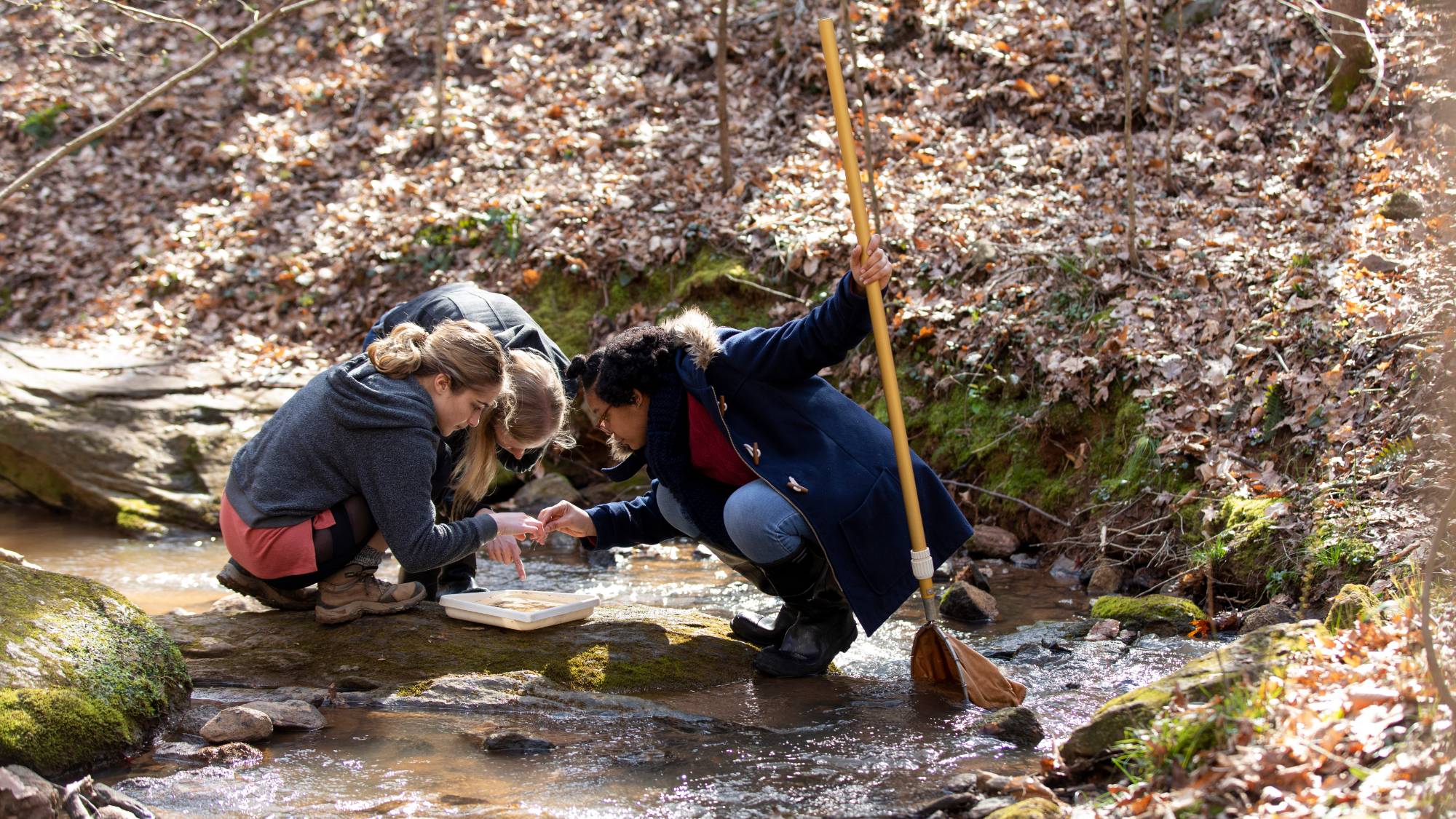Water
Ensuring secure supply and viable waterways
UGA is a world leader in the conservation of water resources, using its campuses and properties as living laboratories to apply faculty, staff, and student expertise to reduce water consumption, protect watersheds, and enhance natural waterways.

REPORT A WATER LEAK OR WATER QUALITY CONCERN
If you see something, please say something. Your observations help facilities managers address problems on campus. The link below allows you to report a Maintenance Issue online. In the case of a facilities-related emergency that needs immediate attention, please call the Work Request Center at 706-542-7456 or the UGA Police Department at 706-542-2200.
Potable Water Conservation
By 2020 UGA used 14% less water overall and 30% less water per square foot of building space than it did in 2007. Contributing operational initiatives include installation of low-flow plumbing fixtures, elimination of laboratory equipment that uses once-through cooling, advanced metering and controls on HVAC cooling towers to optimize water use and provide early warning of malfunctions, infrared detection of underground steam and condensate leaks, and minimization of landscape irrigation through the use of native and micro-climate appropriate plants and minimization of resource intensive turf and annual color beds. Non-potable water is prioritized for outdoor applications (during severe drought conditions non-potable water is the sole source of outdoor watering). Rainwater and condensate water is harvested and used for irrigation, refill of campus fountains, and care of specimen trees.
Beyond main campus, UGA researchers in the College of Agricultural and Environmental Sciences are pioneering smart irrigation and precision agriculture practices to ensure secure food and fiber supplies while safeguarding critical water resources.
Watershed Protection
The UGA Athens campus is situated within the Upper Oconee Watershed and is comprised of five sub-watersheds, including from north to south: Town Spring, Tanyard Branch, "Steam Plant" stream, Lily Branch, and Lake Herrick. UGA is actively working to reduce the quantity of stormwater runoff from its properties and increase the quality and health of waterways on and adjacent to campus. More than 60 acres of new campus green space—such as Herty Field, DW Brooks Mall, UGA Memorial Garden, and other pedestrian oriented spaces—have been created through the removal and redevelopment of impervious roadways and parking lots. Multiple intensive and extensive green roofs reduce runoff and help to mitigate heat island effect from campus facilities including Tate Center West Lawn, Geography-Geology Green Roof Garden, and others. More than 70 bioretention areas (or rain gardens) and various types of porous paving applications slow down, filter, and infiltrate runoff to enhance water quality and recharge base flow in campus streams. UGA contracts with environmental consultants and partners with faculty, staff, and students to conduct ongoing water quality monitoring in campus waterways. Strategies are documented in the UGA Watershed Management Plan (PDF). One of the most notable recent campus watershed initiatives is the restoration of Lake Herrick in Oconee Forest Park.
Beyond campus, the UGA River Basin Center connects interdisciplinary freshwater science to managers and policy-makers to assist aquatic resource management in the southeastern US and around the globe.
UGA WATER PRIMER
This is a two-page summary of how UGA procures and uses water for its campus operations.